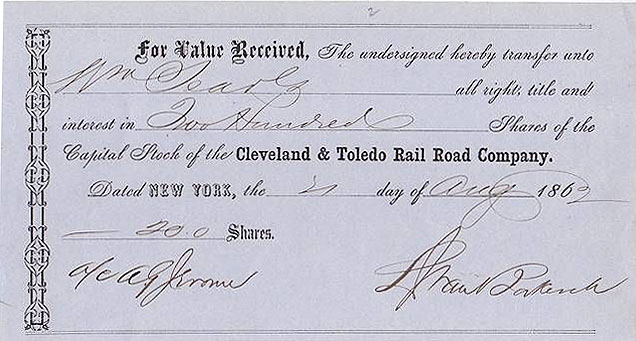Transfer receipts
The need to transfer securities
Securities have always been designed to be bought and sold. Transfer receipts are nothing more than documentary evidence of security trades between sellers and buyers.

Image courtesy of Luca Aspesi
Most of the transfer receipts that survive today are stock transfers. A tiny number of transfers might be mistaken for stock certificates, but the majority are much smaller and rather plain. Most transfers resemble ordinary receipts that might have been used in typical retail and wholesale commerce.
There was an indefinite and variable amount of time between when sellers accepted money for their stocks and bonds and when new certificates were sent to buyers and those transfers officially recorded in the books of companies. During those periods, transfer receipts would have served as proofs of purchases. Whether those same receipts might have held temporary values as securities during those time is open to interpretation. Whether they may have been legally considered securities is probably not able to be determined by casual examination. Theoretically, if something happened to securities between purchases and deliveries, transfer receipts would have stood as proofs of security ownership. In that event, transfers would certainly have served the roles of security stand-ins.
Generic forms lacking printed company names
To be included in this catalog, transfer receipts MUST DISPLAY PRINTED NAMES OF RAILROAD COMPANY.
Countless receipts were designed to record the transfer of billions of securities produced since the foundation of markets in North America. The vast majority of transfer receipts were ordinary, generic documents meant to be filled in by hand. Receipts of that type displayed no printed names and were usable for any type of company, not just railroads. They were ordinary, workaday documents printed by thousands of local printers and used by all sorts of brokers, banks and attorneys. Because of such vast numbers of possibilities, generic transfer forms with handwritten or typewritten company names are NOT CATALOGED in this project.